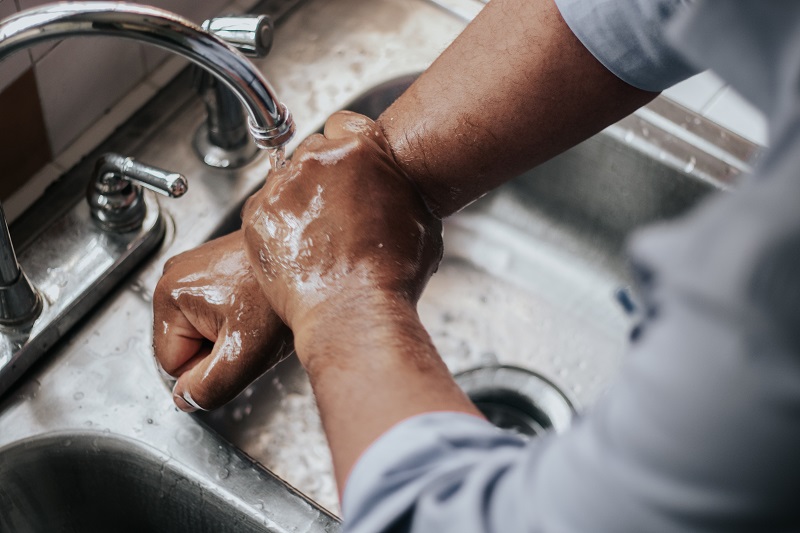by Jennifer Deaver Peterson, MD, FAAD
The Pearl Dermatology, Houston, TX
April is Rosacea Awareness Month. Rosacea, also known as acne rosacea, affects 16 million Americans. It occurs in men, women, all skin tones, and is characterized by facial redness, flushing, sensitive skin, broken blood vessels (telangiectasias), and/or acne-like lesions. Rosacea is best controlled with a combination approach of gentle skincare, prescription medications, laser/light therapy, and minimization of triggers.
Treatment
Many rosacea patients also have sun-damaged skin in the form of brown spots (lentigines). The Lumenis M22 intense pulse light (IPL) uses a spectrum of wavelengths of light to simultaneously reduce facial redness, telangiectasias, and lentigines. These treatments have the benefit of minimal to no downtime and are performed in a medical office. Not all IPL devices are created equally and not all can be used safely in patients with Asian, Hispanic, Brazilian, Mediterranean, and olive skin tones. The Lumenis M22 has enhanced safety features such as contact cooling, multiple sequential pulsing, optimal pulse technology, and longer wavelength filters to allow for treatments in patients with a variety of skin tones.
Choosing the Right Skincare Products
Sensitivity to facial skincare products is a common trigger in rosacea. Those suffering from rosacea should use a mild, non-abrasive cleaner such as CeraVe Hydrating Cleanser or Caudalie Gentle Cleansing Milk and gently pat dry. Some may be tempted to try at home peels, scrubs, or masques; however, these have the potential to worsen facial redness and cause burning, stinging, and irritation. For patients looking for home treatments, we recommend soothing and calming masks such as SkinCeuticals Phyto Corrective Masque and Avene Antirougers Calm Soothing Repair.
Don’t Forget Your Sunscreen!
Although we are staying at home during the COVID-19 crisis, most of us are still getting outdoors for fresh air, exercise, and/or playing with our children. The sun is a trigger for the majority of rosacea patients and results in increased facial redness. Therefore, sunscreen must be an essential part of the skincare regimen. Mineral (zinc oxide and/or titanium dioxide) sunscreens are preferred as they provide broad-spectrum UV coverage and are less irritating than chemical sunscreens. New, cosmetically elegant mineral sunscreens in cream, lotion, powder, and stick based formulations are available and blend beautifully into the skin. Some excellent options include Colorescience Sunforgettable Total Protection Brush-On Shield SPF 50, Colorescience Total Protection Face Shield SPF 50, and Coola Mineral Sun Silk SPF 30.
Other Triggers
There are many potential triggers for rosacea. Heat can exacerbate facial redness. Therefore, it is important to keep cool and limit activities such as saunas and hot yoga. Food and alcoholic beverages such as spicy foods, chocolate, caffeine, red wine, beer, bourbon, gin, vodka, and champagne are common triggers but vary from person to person. Fumes from some household chemical cleansers can also act as exacerbators for many rosacea patients. Finally, stress can trigger a flare of rosacea. Taking a careful rosacea diary for a week can be helpful to pinpoint triggers. While it is not possible to eliminate all triggers from a daily routine, limiting exposure to triggers will aid in the management of rosacea.
Treatment During COVID-19 Crisis
At certain times during the COVID-19 crisis we have been unable to perform cosmetic procedures. However, we can still help control our patients’ rosacea by utilizing gentle skincare, continuing prescription medications via telehealth, and minimizing triggers and stress. While there is no cure for rosacea, there are a variety of effective topical and oral prescription medications available to control and manage rosacea. Many of rosacea treatments are directed towards reducing the acne-like (aka papulopustular) lesions of rosacea and require long-term usage. Another class of topical medications called alpha-adregeneric agonists work to reduce the facial redness of rosacea for up to 8 hours.
Soon we will be back in our offices and have the capacity to re-establish our combination treatment protocols. In the meantime, with gentle skincare, minimization of triggers, prescriptions, and telehealth we can help our rosacea patients navigate the COVID crisis with success.








